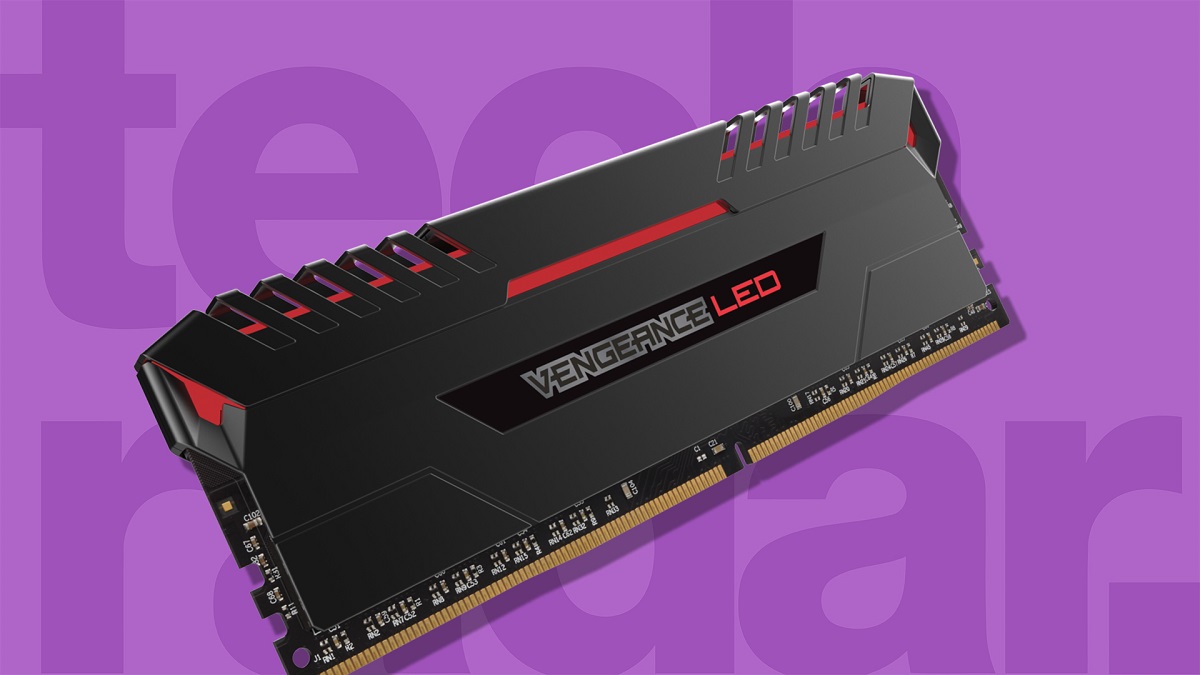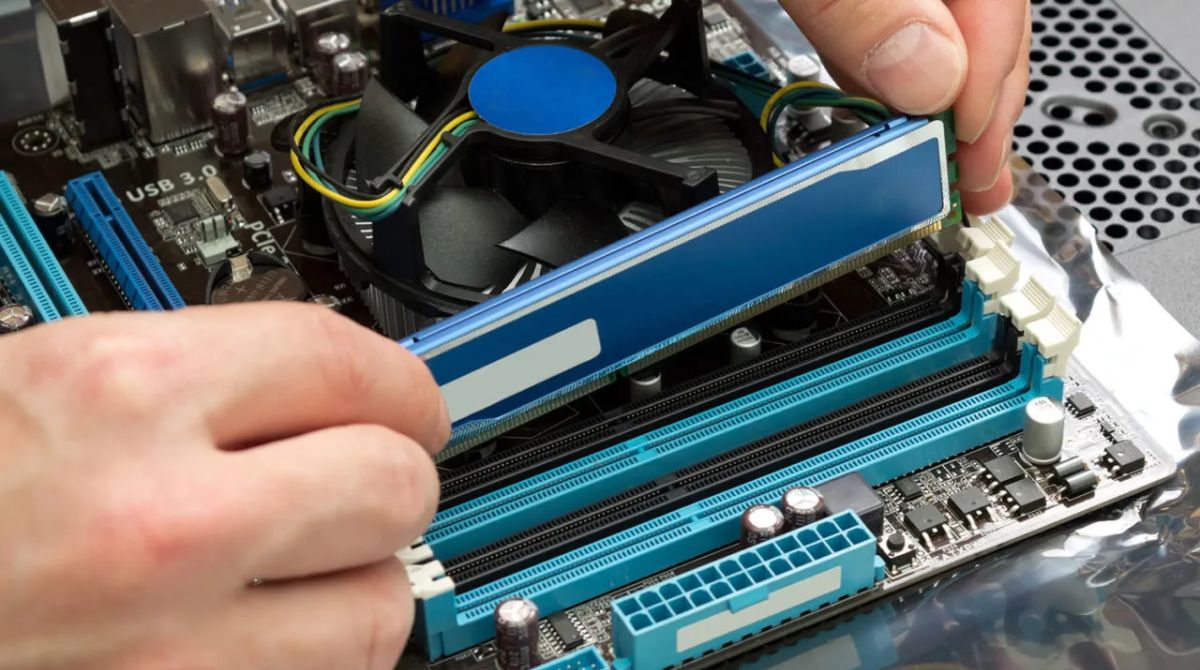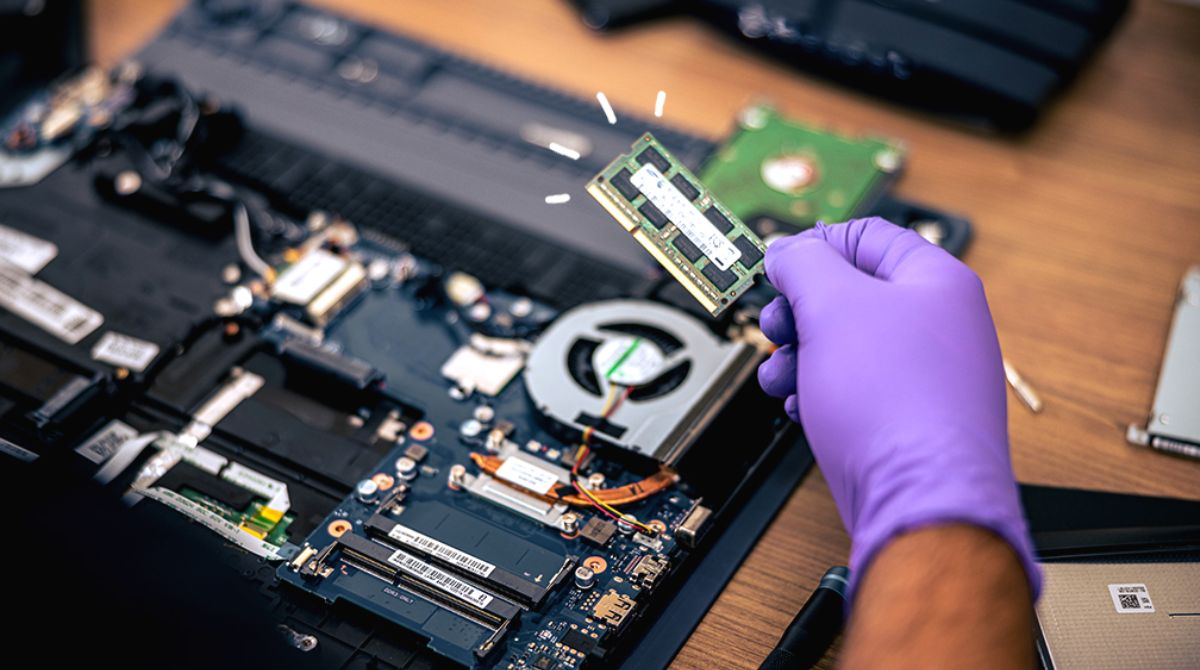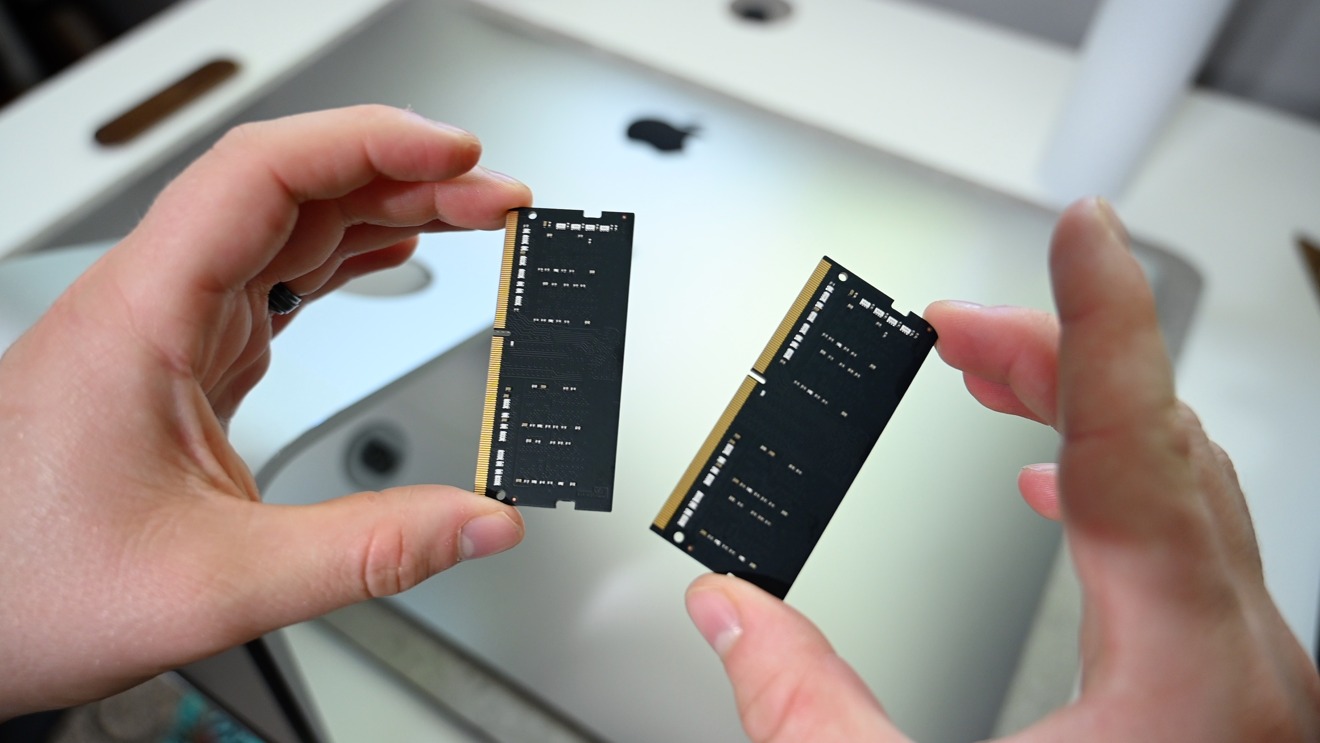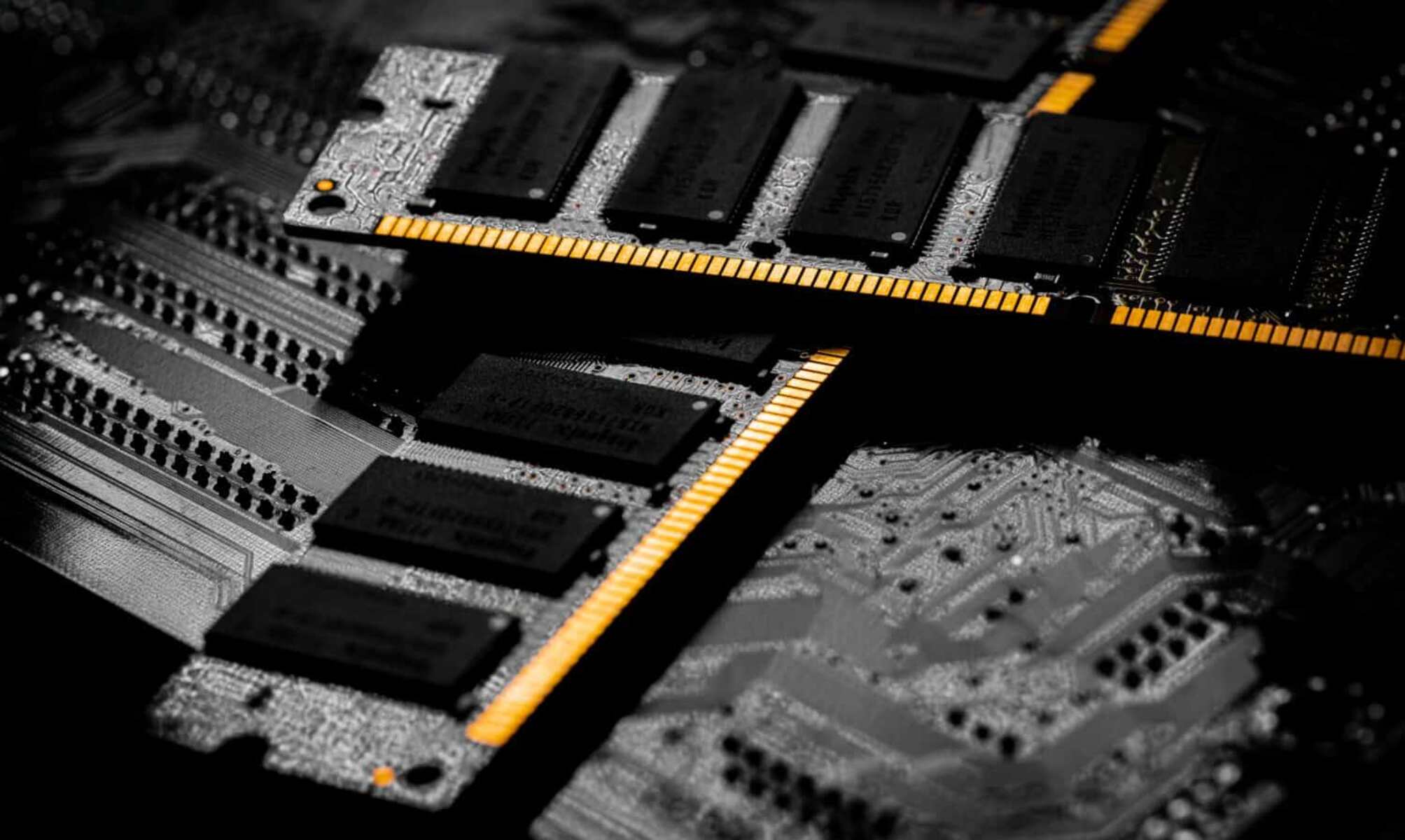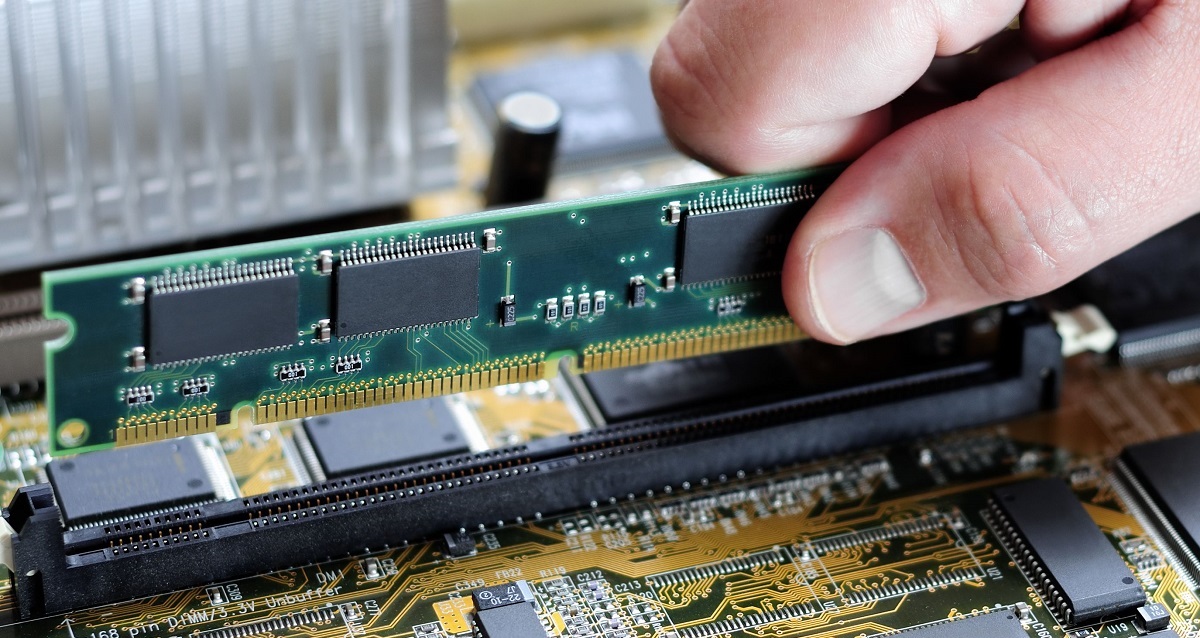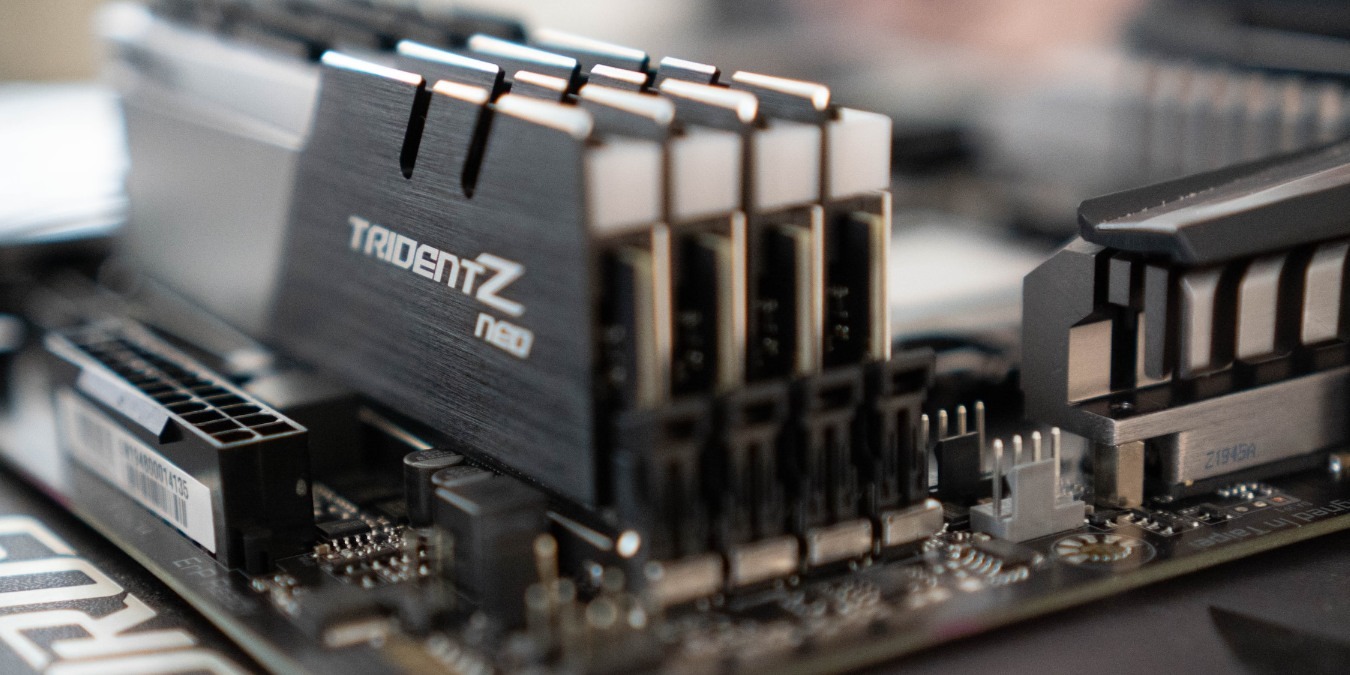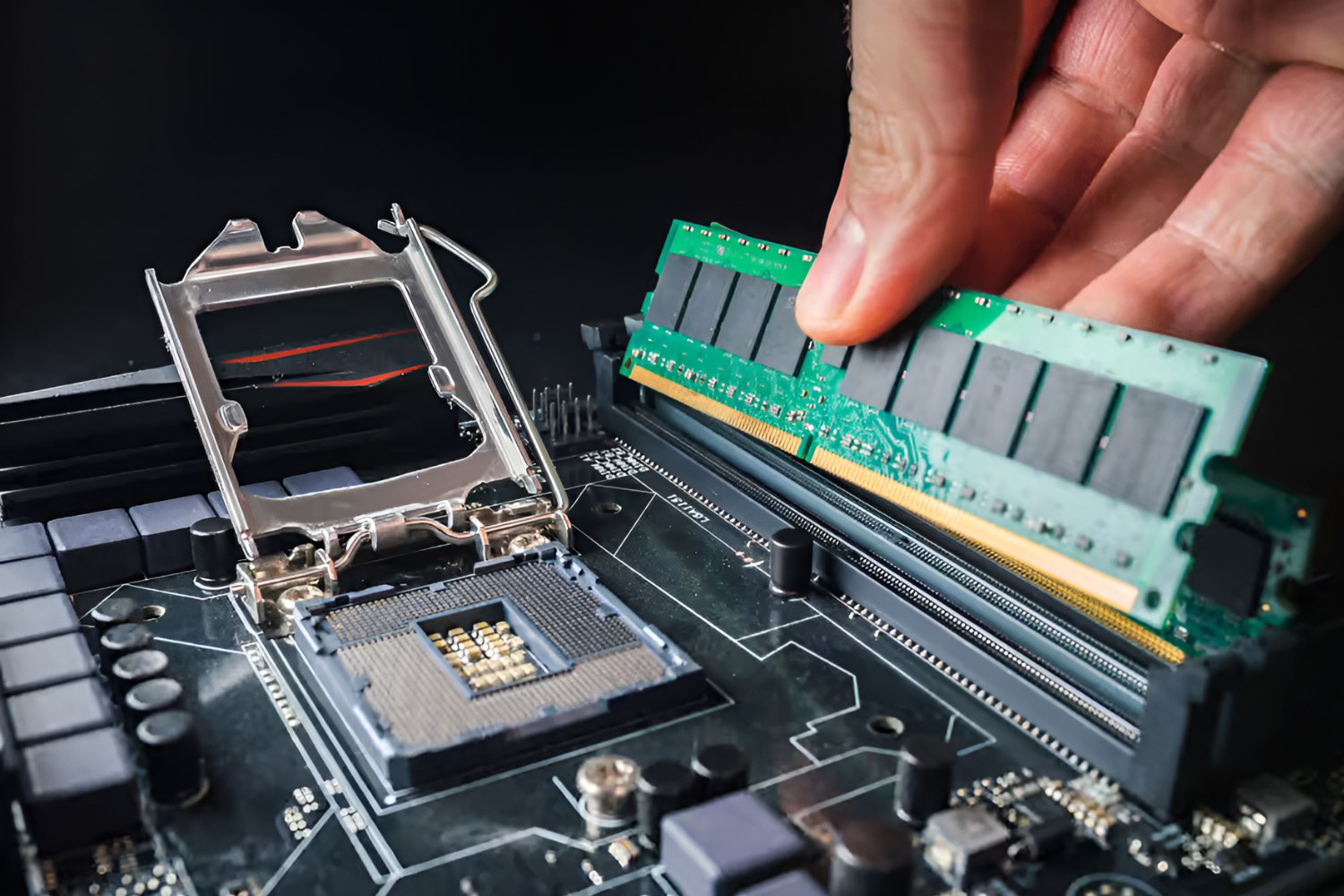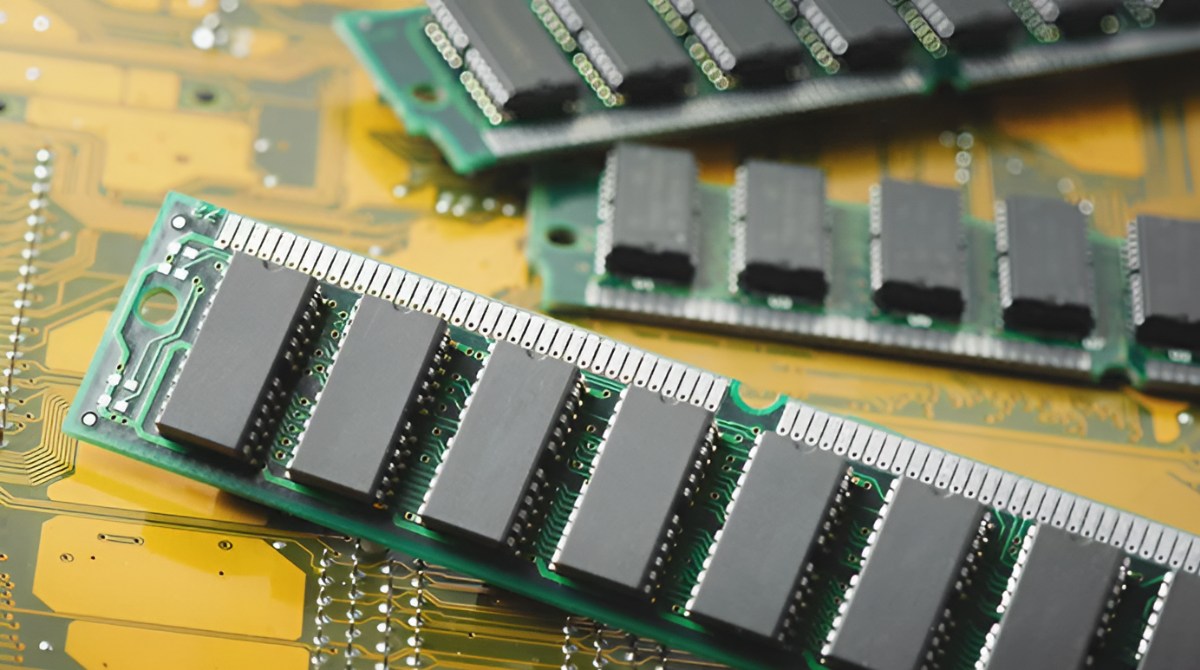Web Browsers
Web browsers are one of the most common applications that utilize a significant amount of RAM. When you open a web browser, it not only consumes memory for the program itself but also for each tab or window you have open. Each website you visit requires resources to load and display, including HTML, CSS, JavaScript, images, and other media. As a result, web browsers tend to consume a substantial amount of RAM, especially if you have multiple tabs or windows open simultaneously.
This increase in RAM usage is driven by the growing complexity of modern websites and the demand for more interactive and dynamic content. Web browsers need to process and render these resources quickly to provide a smooth browsing experience. Additionally, browser extensions and plugins can further contribute to increased RAM usage, as they add additional functionality and features to the browser.
To optimize the performance of your web browser and reduce RAM usage, you can:
- Limit the number of open tabs or windows: Closing unnecessary tabs can free up RAM and improve overall performance.
- Disable or remove unnecessary browser extensions: Some extensions can consume a significant amount of memory, so it’s best to only keep the ones you truly need.
- Clear browsing data: Periodically clearing your browser’s cache, cookies, and history can help reduce the overall memory usage.
- Use a lightweight browser: If your device has limited resources, opting for a lightweight browser can help mitigate excessive RAM usage.
It’s important to note that while web browsers can use a significant amount of RAM, they are not the only applications that contribute to high memory usage on your device.
Operating Systems
Operating systems play a crucial role in managing computer resources, including RAM. They require a certain amount of memory to function properly and provide a user-friendly interface. As operating systems have evolved to support more advanced features and multitasking capabilities, their memory requirements have also increased.
Modern operating systems, such as Windows, macOS, and Linux, are designed to handle multiple tasks simultaneously. They allocate a portion of the available RAM to each running application, allowing it to perform its functions efficiently. The operating system itself also utilizes a significant amount of RAM to manage various system processes, cache frequently used data, and provide quick access to essential system functions.
The amount of RAM used by an operating system depends on several factors, including its design, features, and the number of applications running concurrently. Activities that can increase RAM usage include running resource-intensive software, opening multiple applications or browser tabs, and working with large files.
While operating systems are designed to optimize RAM usage and release memory when it’s no longer needed, excessive multitasking or running memory-intensive applications can lead to high memory usage and slow down system performance.
To manage and optimize RAM usage on your operating system, you can:
- Close unnecessary applications and processes: Closing unnecessary applications can free up RAM for other tasks and improve overall system performance.
- Monitor system resource usage: Use task manager utilities or system monitoring tools to identify applications or processes that consume a significant amount of memory and take appropriate action.
- Upgrade RAM: If you consistently experience high memory usage, upgrading your RAM can provide more capacity for your operating system to work with.
It’s important to keep your operating system updated and maintain a healthy balance between the number of applications running and the available system resources to ensure optimal performance.
Video Games
Video games are known for their immersive and visually stunning experiences, but they also tend to use a significant amount of RAM. When you play a video game, the computer needs to load and store various assets, including textures, 3D models, audio files, and gameplay scripts, in the RAM for quick access.
The RAM is crucial for video games as it helps to provide smooth gameplay and reduces the loading times between different game levels or scenes. Open-world games, in particular, require a substantial amount of memory to store the vast environments and assets.
Newer video games with high-definition graphics, complex physics engines, and realistic audio demand even more memory. The more demanding the game’s system requirements, the more RAM it will consume.
It’s not uncommon for video games to recommend or require a specific amount of RAM to ensure optimal performance. Insufficient RAM can result in lag, stuttering, long loading times, or even crashes.
If you’re experiencing performance issues with video games, there are a few steps you can take to optimize RAM usage:
- Close unnecessary background applications: Closing any unnecessary programs running in the background can free up RAM for the game.
- Lower game settings: Adjusting graphical settings within the game can reduce the memory required for graphics processing.
- Upgrade RAM: If you consistently encounter performance issues, upgrading your RAM to meet the game’s recommended requirements can make a significant difference.
It’s worth noting that video games are resource-intensive applications, and while they may use a substantial amount of RAM, they also rely on other hardware components, such as the CPU and graphics card, for optimal performance.
Video and Photo Editing Software
Video and photo editing software, such as Adobe Photoshop, Adobe Premiere Pro, and Final Cut Pro, are widely used by professionals and enthusiasts to manipulate and enhance visual content. These programs are known for their extensive features and capabilities, but they also tend to be quite resource-intensive, including RAM usage.
When working with high-resolution images or editing videos, these software applications need to load and process large amounts of data into the RAM for real-time editing. This includes multiple layers, effects, filters, transitions, and color grading, all of which require significant memory resources to operate smoothly.
The more complex the project and the higher the resolution of the media being edited, the more RAM the software will need to store and manipulate the data effectively. Insufficient RAM can lead to slow performance, rendering delays, and even crashes during editing sessions.
While each software has its own recommended system requirements, having additional RAM beyond the minimum requirements is beneficial for smoother editing experiences.
To optimize RAM usage when using video and photo editing software, consider the following tips:
- Close unnecessary applications: Shutting down any unnecessary programs running in the background can significantly free up RAM for the editing software.
- Allocate more RAM to the software: Some editing software allows you to adjust the memory allocation in their settings. Allocating more RAM can enhance performance, especially when working with large files.
- Upgrade RAM: If you frequently work on complex projects, consider upgrading your RAM to meet or exceed the recommended requirements of the editing software.
- Optimize file formats: Using optimized file formats, such as proxy files, can reduce the amount of RAM needed to process and edit media files.
Remember to keep your editing software and operating system updated to benefit from any performance optimizations and bug fixes that may improve RAM usage.
Virtual Machines
Virtual machines (VMs) are software programs that emulate a computer system within another operating system. They allow you to run multiple operating systems and applications simultaneously on a single physical machine, making them a valuable tool for software development, testing, and running legacy applications.
When you set up a virtual machine, it creates a virtual environment with its own virtual hardware, including CPU, memory, storage, and network interfaces. This virtual hardware is allocated from the host machine’s physical resources, including RAM.
RAM is a vital component for virtual machines as it determines how many virtual machines can be run concurrently and how smoothly they will perform. Each virtual machine requires a certain amount of memory to allocate to its operating system and virtual applications.
The amount of RAM required for a virtual machine depends on various factors, such as the operating system being run, the workload being performed, and the number of virtual machines running simultaneously on the host machine.
Insufficient RAM can cause virtual machines to run slowly, experience performance issues, or even fail to start. On the other hand, when allocated too much RAM to virtual machines, it can affect the performance of other applications running on the host machine.
To optimize RAM usage when working with virtual machines, consider the following:
- Allocate RAM wisely: Determine the RAM requirements for each virtual machine based on the workload and allocate resources accordingly. Avoid over-allocating RAM to prevent resource bottlenecks.
- Monitor RAM usage: Use performance monitoring tools to keep track of RAM usage for virtual machines. This will help you identify any potential issues or bottlenecks and take appropriate actions.
- Upgrade host machine RAM: If you frequently work with multiple virtual machines or resource-intensive workloads, consider upgrading the host machine’s RAM to accommodate the increased demands.
- Consider resource sharing techniques: Explore features such as memory ballooning or dynamic memory allocation that allow virtual machines to use shared memory resources more efficiently.
Proper planning and resource allocation are key to ensuring efficient and effective use of RAM when working with virtual machines.
3D Modeling and Rendering Software
3D modeling and rendering software is extensively used in various fields, including architecture, product design, animation, and visual effects. These applications, such as Autodesk Maya, Blender, and Cinema 4D, enable users to create intricate 3D models, scenes, and animations. However, they also require a substantial amount of RAM to function effectively.
When working with 3D modeling software, the application needs to load and manipulate complex 3D objects, textures, materials, lighting, and animation data in real-time. To accomplish this, the software relies heavily on RAM to store and process the large amounts of data associated with the 3D models.
The level of RAM usage depends on the complexity of the models being created, the number of objects and vertices, the resolution of textures and materials, and the complexity of the rendering settings. High-resolution textures and complex lighting or shader effects can significantly increase RAM usage.
Additionally, rendering, which is the process of generating the final image or animation from the 3D models and scene, requires substantial amounts of RAM to store the necessary data during the rendering process. Complex scenes or animations with high-definition textures, intricate lighting, and multiple render passes can consume a considerable amount of RAM.
To optimize RAM usage when working with 3D modeling and rendering software, you can:
- Allocate sufficient RAM: Ensure that your computer has enough RAM to handle the memory requirements of your 3D models and rendering tasks. Consider upgrading your RAM if you frequently work with extensive or high-resolution projects.
- Optimize scene and model complexity: Simplify models, reduce polygon counts, use efficient textures, and optimize scenes to minimize the overall memory footprint while maintaining the desired level of detail.
- Use render farms or cloud-based rendering: Offloading rendering tasks to external servers or cloud-based rendering services can help spread the resource requirements, reducing the strain on your local machine’s RAM.
- Close unnecessary applications: Shut down any unnecessary background programs to free up RAM for your 3D modeling and rendering software.
By effectively managing RAM usage, you can ensure smooth operation and efficient rendering of your 3D models and scenes.
Multimedia Streaming Services
Multimedia streaming services, such as Netflix, Amazon Prime Video, and Spotify, have revolutionized the way we consume entertainment content. These services allow us to stream movies, TV shows, music, and other multimedia content directly from the internet. However, streaming media from these platforms can use a significant amount of RAM.
When you stream media, the streaming service needs to buffer and store portions of the content in your device’s RAM to ensure a seamless playback experience. This buffering process helps provide a continuous stream of data, compensating for fluctuations in internet connectivity speed.
The amount of RAM used during streaming depends on various factors, including the quality of the media being streamed, the bit rate, and the buffer settings of the streaming service. Higher-quality video and audio require more memory to store the data temporarily.
Streaming services typically adjust the streaming quality based on the available internet bandwidth and device capabilities to ensure smooth playback. This adaptive streaming technology takes into account the available RAM to optimize the streaming experience.
While streaming media can temporarily consume a large amount of RAM during buffering, the actual memory footprint tends to be transient, as the buffered data is continuously replaced as you watch or listen to the content.
To optimize RAM usage when streaming media, you can:
- Close unnecessary applications: Shutting down unnecessary background programs and processes can free up RAM, allowing more available memory for streaming services.
- Upgrade RAM if necessary: If you frequently experience buffering issues or sluggish performance while streaming media, consider upgrading your device’s RAM to ensure smoother playback.
- Monitor buffer settings: Some streaming services allow you to adjust the buffer settings. Optimizing these settings can help balance memory usage and provide a better streaming experience.
- Ensure a stable internet connection: A reliable and fast internet connection can minimize buffering and reduce the need for extensive buffering and storage in RAM.
By managing RAM usage and optimizing your device’s performance, you can enjoy smooth and uninterrupted streaming of your favorite multimedia content.
Data Analysis and Simulation Software
Data analysis and simulation software, such as MATLAB, R, and SAS, are powerful tools used in various fields, including data science, engineering, and scientific research. These applications allow users to manipulate and analyze large datasets, run complex simulations, and generate insightful insights. However, such software can be resource-intensive and consume a substantial amount of RAM.
When working with data analysis and simulation software, the software needs to load the datasets into RAM for processing. The size of the dataset and the complexity of the analysis or simulation determine the amount of RAM required. Large datasets or complex simulations can quickly exhaust available memory, leading to performance issues or even crashes.
Complex statistical models, machine learning algorithms, or simulation algorithms can also contribute to high RAM usage. These algorithms often involve complex calculations and mathematical operations that require sufficient memory to store intermediate results.
Additionally, data visualization, which is an essential aspect of data analysis, often requires substantial RAM to generate and render graphics or plots based on the analyzed data. High-resolution visualizations or interactive dashboards can further add to the RAM requirements.
To optimize RAM usage when working with data analysis and simulation software, consider the following:
- Allocate sufficient RAM: Ensure that your computer has enough RAM to handle the memory requirements of your datasets and analysis tasks. Consider upgrading your RAM if you frequently work with large datasets or perform complex simulations.
- Optimize data storage: Utilize efficient data storage formats and compression techniques to reduce the overall memory footprint while maintaining data integrity and performance.
- Write efficient code: Optimize your code for memory usage, avoiding unnecessary duplication of data and minimizing memory leaks.
- Parallel processing: Leverage the power of multi-core processors and parallel computing techniques offered by your software to distribute the computational workload and effectively utilize available RAM.
By managing RAM usage effectively and optimizing your code and software settings, you can ensure smooth and efficient data analysis and simulation processes.
Graphic Design Software
Graphic design software, such as Adobe Illustrator, Adobe Photoshop, and CorelDRAW, are essential tools for designers to create stunning visuals and artwork. These applications offer a wide range of features, including vector graphics editing, image manipulation, and digital drawing. However, graphic design software can be demanding on RAM due to the nature of their functions.
When working with graphic design software, the application needs to load and manipulate various assets, including high-resolution images, vector graphics, brushes, and effects. These assets can consume a significant amount of RAM, especially when working on complex and detail-oriented projects.
The complexity and size of the design files being created or edited also influence the RAM requirements. Working with large canvas sizes, multiple layers, and high-resolution elements can quickly exhaust available memory, leading to slower performance and potential crashes.
Real-time rendering of effects, filters, and adjustments can further strain the RAM usage. Graphic design software often provides live previews and instant feedback, which require storing and updating temporary data in RAM for smooth interaction.
Additionally, advanced features such as 3D rendering or working with video editing capabilities within graphic design software can significantly increase RAM requirements.
To optimize RAM usage when working with graphic design software, consider the following:
- Allocate sufficient RAM: Ensure that your computer has enough RAM to handle the memory requirements of your design projects. Consider upgrading your RAM if you frequently work on large files or resource-intensive tasks.
- Manage layers and effects: Streamline your design projects by organizing layers and minimizing the number of effects or adjustments applied. This helps reduce the RAM usage and improves overall performance.
- Using linked assets: Whenever possible, use linked assets instead of embedding them in your design file. This allows the software to reference the assets externally and reduces the RAM usage when working on multiple files simultaneously.
- Close unnecessary applications: Shut down any unnecessary programs or background processes to free up RAM for your graphic design software.
By effectively managing RAM usage and optimizing your design workflow, you can ensure smooth performance and efficient creation of visually stunning designs.
4K Video Editing Software
4K video editing software has become increasingly popular as more and more content is produced and consumed in high-resolution formats. Programs like Adobe Premiere Pro, Final Cut Pro, and DaVinci Resolve offer powerful tools to edit and process 4K footage. However, working with 4K video requires substantial resources, including a significant amount of RAM.
4K video files contain a high level of detail and require a larger amount of memory to process and edit. These videos typically have larger file sizes and higher bit rates, resulting in increased RAM usage during editing. The software needs to load and decode the video frames into RAM to provide a smooth editing experience.
Efficient previewing and real-time playback of 4K video also depend on the amount of RAM available. Insufficient RAM can lead to dropped frames, stuttering playback, and overall sluggish performance.
When working with 4K video editing software, it is essential to have enough RAM to handle the memory requirements. Additionally, the complexity of the project, the number of video tracks, and the presence of effects, transitions, and color grading further contribute to RAM usage.
To optimize RAM usage when working with 4K video editing software, consider the following:
- Allocate sufficient RAM: Ensure that your computer has enough RAM to handle the memory requirements of your 4K video editing projects. Consider upgrading your RAM if you frequently edit large, high-resolution videos.
- Close unnecessary applications: Shut down any unnecessary programs or background processes to free up RAM for your 4K video editing software.
- Optimize preview settings: Lower the preview quality or use proxy files for smoother playback during editing. This reduces the demand on RAM for real-time previewing.
- Use optimized codecs and formats: Choose video codecs and formats that are optimized for editing, as they can reduce the strain on your computer’s resources, including RAM.
It’s important to note that efficient 4K video editing also depends on other hardware components, such as the graphics card and the processor, in addition to having sufficient RAM. Optimizing all these elements collectively will result in a smooth and efficient editing process for your high-resolution videos.







